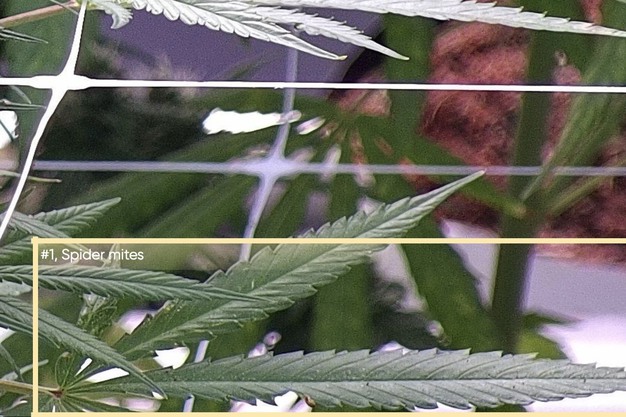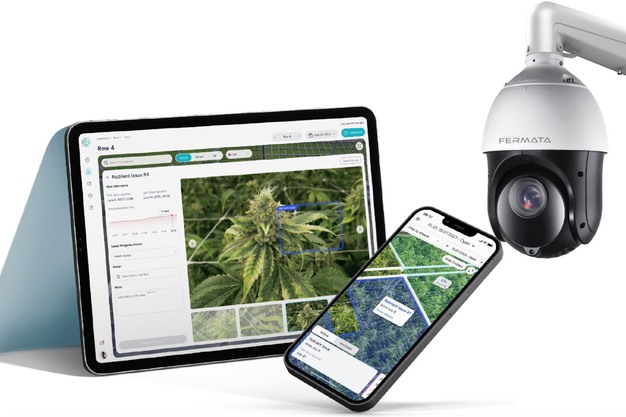In controlled environments, consistency is king, queen, and the entire court. Whether you're growing cannabis, tomatoes, or ornamentals, even a single outbreak of pests or pathogens can spell the end of an entire cycle. That's exactly the kind of risk Fermata aims to minimize with its AI-powered crop monitoring tool, Croptimus. "Growers face two major issues," says Viktor Falkengren, Product Manager at Fermata. "One is staying ahead of pests and diseases. The other is the cost and subjectivity of manual scouting. That's why we have come up with a solution that automates that process with cameras and AI."
At its core, Croptimus is a deceptively simple solution: off-the-shelf security cameras, placed inside a greenhouse and connected via internet. What makes it powerful is indeed the AI model running behind the scenes. Trained on thousands of real-world pest and disease cases, Croptimus continuously scans for issues like aphids, thrips, powdery mildew, bud rot, and even nutrient deficiencies, "Which are the most common issues cannabis growers face," he points out. "We're not here to replace IPM managers. We're giving them real, objective data to make better decisions. Especially in cannabis, where plant's damage threshold is low and regulations are strict, early detection is essential."
 © Fermata
© Fermata
Saving labor
Scouting is one of the most labor-intensive, and inconsistent, parts of greenhouse growing, according to Viktor. Croptimus automates it with around-the-clock visual monitoring, flagging problems before they become outbreaks. This results in fewer emergency treatments, lower scouting costs, and healthier plants overall. "Growers tell us their scouts spend less time on guesswork and more time on what matters," Viktor says. "In one case, we helped a cannabis flower grower cut down an aphid infestation and increase yields by 60%. In another, a cannabis operation reported a 10% yield bump just by reallocating labor and reducing loss."
It's not just about pests. The system can also detect yellowing, wilting, mechanical damage, and is on the roadmap to include crop registration data like bud size and plant height , offering a way to correlate plant growth with pest pressure and treatment efficacy. "Climate and irrigation data can also be integrated through APIs with platforms like LetsGrow, allowing for a more holistic view of plant health."
Data for compliance
For cannabis growers, compliance adds another layer of complexity. Fermata is currently planning to add to Croptimus a traceable crop health history, providing the kind of consistent documentation required by regulators, without manual data entry. "One grower in Canada told us data tracking was half the job," says Falkengren. "With our tool, that data would be generated automatically. You could even track the effectiveness of biological treatments by feeding the info into the system."
 © Fermata
© Fermata
Built for scale
Fermata's approach to scaling has been simple: get cameras into greenhouses as early and widely as possible, validate data through continuous grower feedback, and iterate the AI models through strong transfer learning. The more growers use it, the smarter it gets.
"We built the system to be flexible," Viktor says. "It adapts to new pests, new geographies, and new growers. While our core market is currently Canada and we are in the process of scaling up in the Netherlands, and other European countries, we have growers on all continents."
Viktor says they're deep in conversations with cannabis growers, exploring future features like IPM strategy recommendations based on data patterns and treatment outcomes. But for now, the focus remains on delivering accurate, consistent detection that scales with the size of the operation. "In this market, you can't afford inconsistency," Falkengren adds. "Croptimus helps growers stay one step ahead, not just of pests, but of losses."
For more information:
Fermata
fermata.tech










